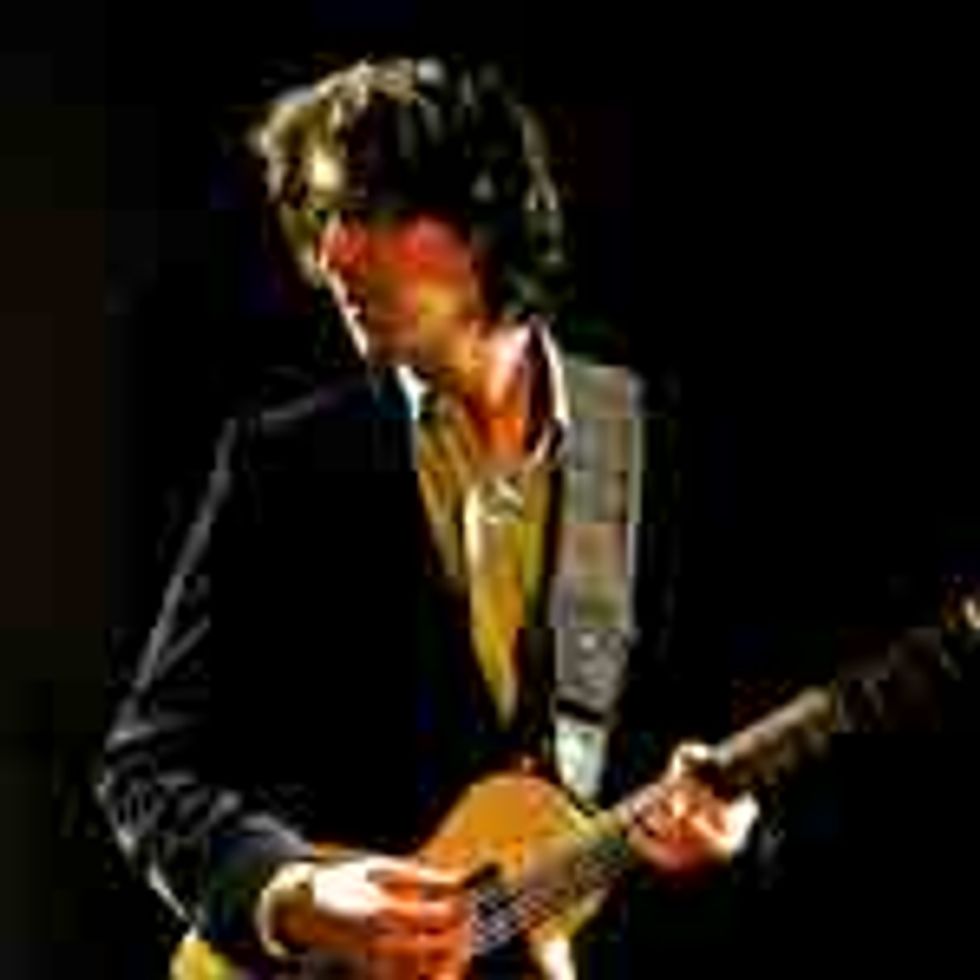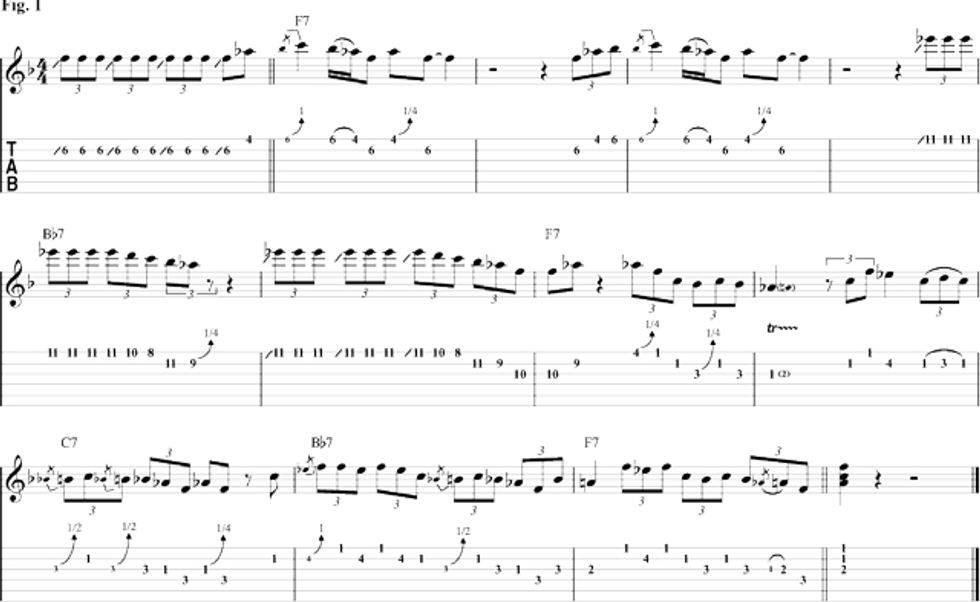One of Duane Allman''s biggest influences was Wayne Bennett. Check out this lesson on Bennett''s style and cop some cool licks for a medium-tempo shuffle.
Chops: Intermediate
Theory: Beginner
Lesson Overview:
• Understand the nuances of Wayne Bennett’s style.
• Develop simple phrases to use over a medium-tempo blues shuffle.
• Learn how Duane Allman was influenced by Bennett’s playing.
Click here to download a printable PDF of this lesson's notation.
The first time I met Gregg Allman was in the fall of 2008. Jay Collins (Gregg’s sax player and music director) rushed me from Brooklyn out to Camden, New Jersey, to sit in with the Allman Brothers. This turned out to be my audition to join the Gregg Allman Band and I’m glad to say I’ve been his guitarist ever since.
When I got backstage Gregg received me with a warm smile, “So, you’re that cat everybody’s been telling me about who knows all them old licks. You know, like all those Wayne Bennett licks on those Bobby “Blue” Bland records.” Now I came up around some of the heaviest musicians from the Chicago blues scene during my teenage years, and I spent countless hours dissecting old Magic Sam, Earl Hooker, Robert Nighthawk, and Hubert Sumlin records. But somehow after all these years I never knew who that guitarist was on those Bobby Bland records.
Needless to say I nodded in agreement, sat in on the Allman Brothers show, and woke up the next day to furiously consume as much Wayne Bennett as possible. His style falls in line with the “post T-Bone Walker” session men of the late ’50s and early ’60s—players like Mickey Baker, Lowman Pauling, and Billy Butler come to mind.
To mimic Bennett’s tone, instead of switching to your bridge pickup to get that cutting sound, try picking close to the bridge while using the neck pickup. I feel that using this technique with a flatpick gives single-note lines a beefy swing, and Wayne uses it to great effect.
Gregg went on to tell me that Wayne Bennett was one of Duane’s biggest influences, especially on Bobby Bland cuts like “Stormy Monday Blues” (where Wayne puts his own stamp on the T-Bone Walker sound) and most famously in the Allman family, “Further on up the Road.”
This one-chorus break in Fig. 1 is like a blues haiku, and the way Wayne and Bobby play call and response all over the track brings to mind the guitar-and-vocal interplay that Gregg and Duane would perfect in the late ’60s on songs like “Statesboro Blues” and, of course, “Stormy Monday Blues,” which are both from Live at the Fillmore West.
Wayne Bennett passed away from heart failure back in 1992 at the age of 60. There are a couple of YouTube clips of him performing live. Most notably a black-and-white video from 1979 of him in a club tearing up a funky version of the Philly soul classic “She Used to Be My Girl,” à la George Benson or Grant Green. You can also see him sparring with Ry Cooder and one of his old employer’s, Jimmy McCracklin, on a club date in the ’80s.
Finally, I have included my interpretation of Wayne’s solo on my own recording as part of this transcription. Make sure you go back to the original studio version by Bobby “Blue” Bland and continue to dig deep into Wayne Bennett’s discography as a sideman (including some great cuts with Johnny Adams, Amos Milburn, and Ike Turner).
“Further on up the Road” is sure to deepen your knowledge of how to play over a swinging medium shuffle and should also help shed some light on the genius of Duane Allman’s guitar playing and the foundation of the Allman Brothers sound. That sound was new for rock ’n’ roll, but firmly rooted in a mastery of the “old licks” of guitar masters like Wayne Bennett.
 Scott Sharrard
Scott SharrardScott Sharrard is a guitarist/vocalist/songwriter and producer based in New York City. He’s the guitarist for the Gregg Allman Band and also leads Scott Sharrard & the Brickyard Band, as well as the CKS Band. When not touring, Sharrard teaches private guitar lessons at his midtown New York studio and via Skype. Visit scottsharrard.com for more information.


